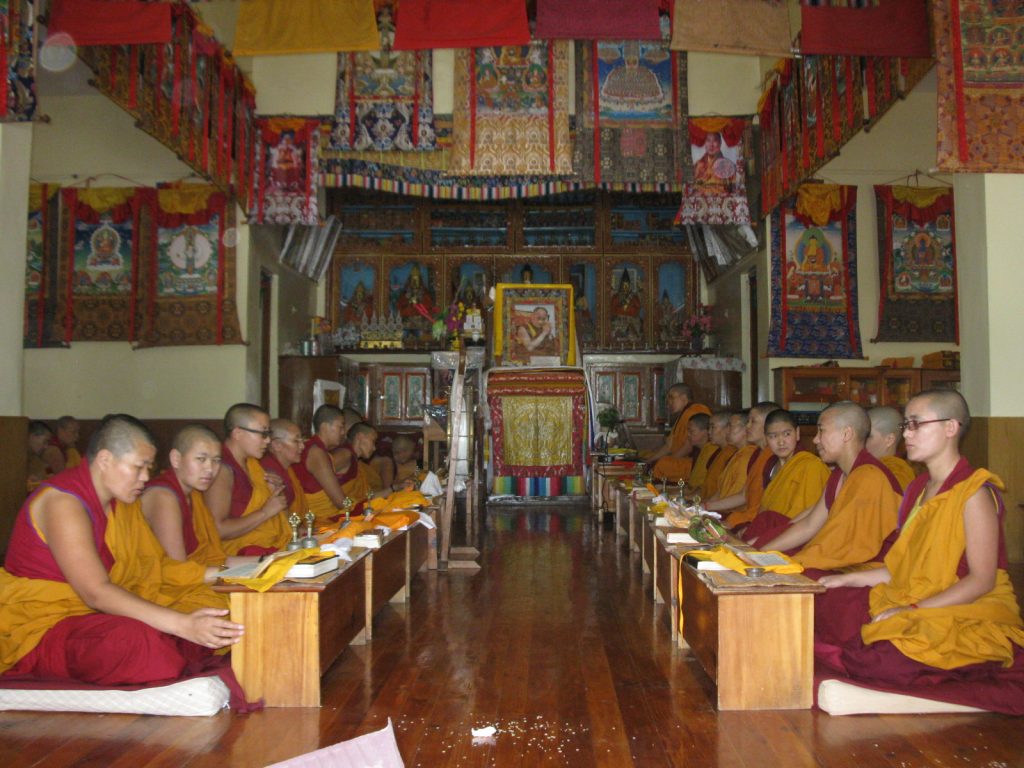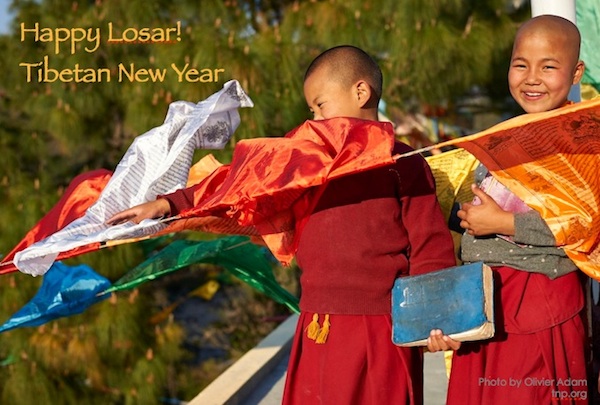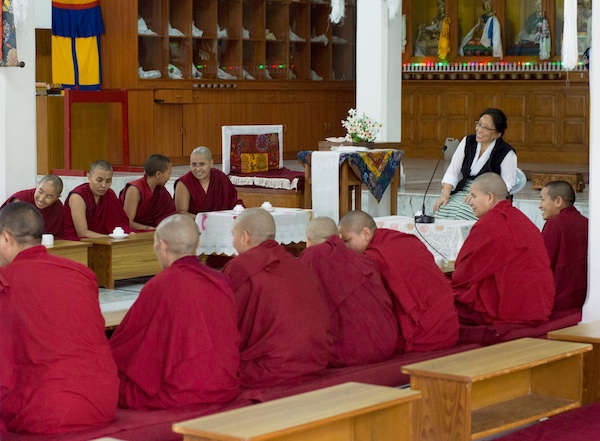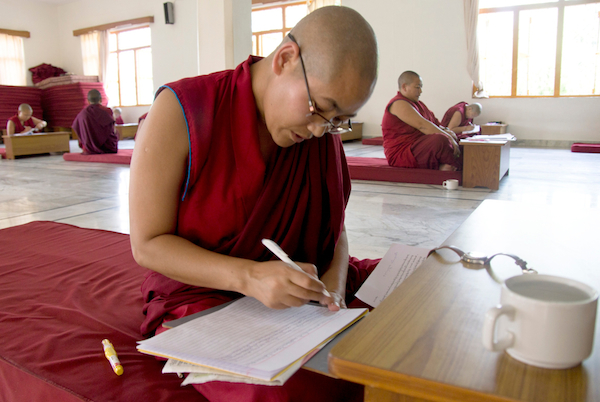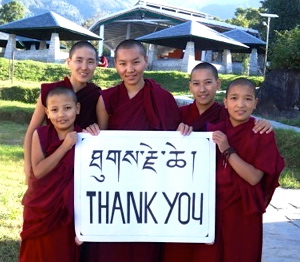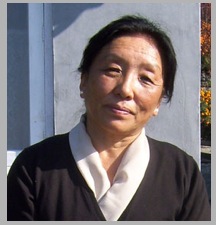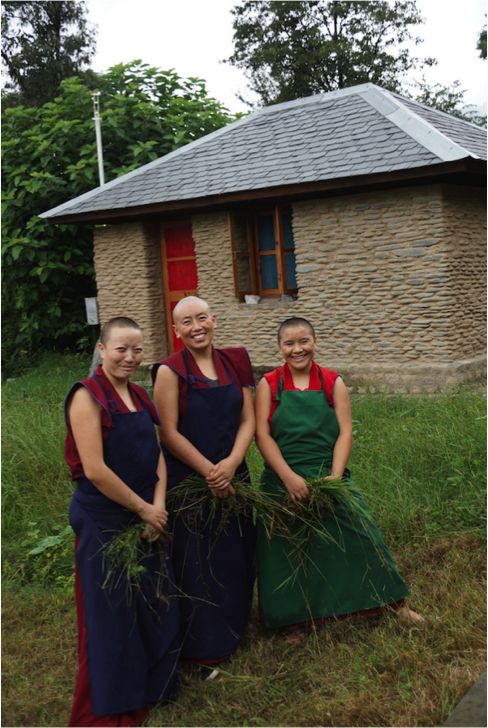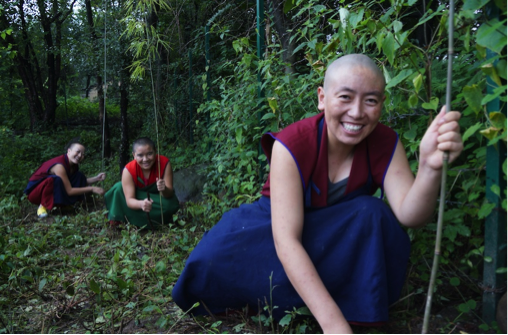Thekchen Chöling, Dharamsala, India 3 November 2013
Report from the Office of His Holiness the Dalai Lama
This morning His Holiness the Dalai Lama met briefly with nuns from eight nunneries who for the last month have been taking part in the Jang Gonchoe, the Great Winter Debate, held this year at Dolma Ling Nunnery. He began:
“You’ve all been engaged in debate based on Dharmakirti’s ‘Commentary on Epistemology’ (Pramanavarttika), What did you learn from each other?”
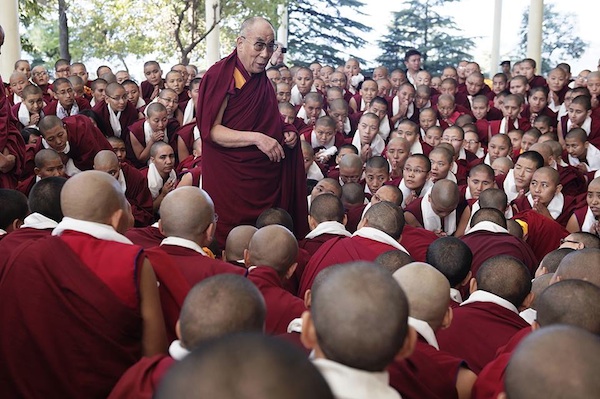
His Holiness the Dalai Lama speaking encouragingly to nuns from several nunneries who had taken part in the just concluded annual winter debate session during their meeting at the Main Tibetan Temple in Dharamsala, India on November 3, 2013. (Photo by Tenzin Choejor/OHHDL)
He said that there are reports that at one time in Tibet there was a tradition of nuns studying the classic Buddhist texts, which eventually lapsed. This has changed. He cited nuns from Kopan in Nepal last year defying the Tibetan joke about nuns being proud of having memorized the Samantabhadra prayer when they memorized not only Chandrakirti’s ‘Supplement to (Nagarjuna’s) Treatise on the Middle Way’ (Madhyamakavatara) and Maitreya’s ‘Ornament for Clear Realization’ (Abhisamayalankara), but also Haribadra’s commentary ‘Clear Meaning’ (Sputartha), which His Holiness admitted was even more than he had done.
As to how a revival of nuns studying the classic texts has come about, His Holiness referred to the description of Tibet as a Central Land. This does not have any bearing on its geographical location, but on the existence of a complete Sangha, the fourfold Buddhist community, monks, nuns and male and female laypeople holding vows.
Referring to the as yet unresolved question of instituting the bhikshuni ordination in the Tibetan tradition, His Holiness said:
“Some people have complained about this, because a conclusion has not yet been reached. But this is not something that can be decided by me alone. The Buddha laid down rules and procedures that a single monk cannot decide to change. It requires a consensus within the monastic community. We have held meetings and discussions amongst ourselves and with other communities such as the excellent upholders of the Vinaya (monastic discipline) in the Pali tradition.
“In Tibet we follow the Mulasarvastivadin tradition of Vinaya established by Shantarakshita, a tradition that comes down from Rahula, the Buddha’s own son. This is the tradition we have carefully preserved that differs only superficially from the Theravada Vinaya observed in the Pali Tradition. When Atisha came to Tibet, out of respect for the already established Mulasarvastivadin tradition, he said there was no point in his trying to propagate the Lokattaravada tradition that he followed himself.”
His Holiness stressed that observing vinaya purely is of fundamental importance. The Mulasarvastivadin texts suggest that senior bhikshunis need to preside over a bhikshuni ordination and suggest that it is not proper for bhikshus alone to preside over such a ceremony. Therefore, if bhikshus alone were to conduct such a ceremony it is not clear that it would be flawless. This is the impasse which is yet to be answered. His Holiness mentioned a Chinese vinaya master, who is no longer alive, who advised that while doubts exist, efforts should be made to resolve them. What still needs to be decided is whether a bhikshuni ordination ceremony can be conducted according to the Mulasarvastivadin rite with or without the presence of senior bhikshunis.
“Some people have criticized me, calling me a ‘male chauvinist’, because I am not exercising my alleged authority. But I cannot decide this on my own. However, what I can do is to encourage nuns to study the classic texts. Biologically there is no difference between the brains of men and women and the Buddha clearly gave equal rights to men and women. In tantra women are accorded special respect. And yet when it comes to vinaya we have to follow tradition.”
His Holiness reiterated that nuns have an equal right to study, which is why almost 40 years ago he encouraged nuns to embark on the study of philosophy. They began at Geden Choeling and this has since become the norm in other nunneries.
“I have witnessed nuns debating,” he said, “and they do very well. We have finally decided on holding Geshema exams for nuns, which is a proper conclusion of their years of study. When we first discussed a Geshema degree, some scholars expressed surprise, but we persisted. This is about education and the gaining of knowledge.
“In the past, masters like Gyen Pema Gyaltsen studied for 30 or 40 years before taking their Geshe exams. These days it generally takes about 20 years. I made a request that nuns be able to study the philosophical texts, you have done it and I’d like to thank you.”
He clarified that the Buddha’s teaching comprises realization as well as knowledge, so it is important to follow a course of practice as well as a course of study. This is how the Dharma is preserved. Study is necessary to achieve understanding and practice is necessary to achieve realization. Practice can only take place on the basis of understanding. His Holiness talked about people he has met who said they were Buddhists, who said that to be a Buddhist you have to take refuge in the Buddha, but who could not say what the Buddha is.
He said that many of us aspire to become a Buddha, but if we do not understand the path, we cannot reach the goal. We may have Buddha nature, but we need to understand emptiness to realize it. We may be full of negative emotions to start with, but we can free ourselves of them. Where there is knowledge there is no place for blind faith. We cannot practise the Dharma on the basis of faith alone. We need not only knowledge, but understanding too.
“We study the Three Collections of Scripture to learn about the three trainings in ethics, concentration and wisdom. Once we have studied we need to gain experience through practice. It’s not enough to say I’ve read or I’ve heard that it’s good if you practise the Three Trainings. You need to be able to teach on the basis of your own experience. Because of our emphasis on study, people can get carried away by debate without giving much thought to practice. This is why I have requested the monasteries to establish places where monks can go into retreat. If we study the Perfection of Wisdom texts we’ll find in them exhortations to engage in practice.
“The Dharma is at a critical juncture. You might think that it would be good to spend the rest of your life as a hermit, but we also need qualified people to teach others. Once you complete your studies we need some of you nuns to teach. Until now you have relied on monks to teach you, but in future it will be very important that there are also nuns to teach nuns. More than that, we also need nuns to teach in our secular schools. In the past, because they had not studied themselves, parents were unable to teach their children the Dharma. Therefore, I request you, after your studies consider going into retreat, and after that resolve to teach others. That’s all – thank you.”
His Holiness posed for photographs with groups of nuns and with all of them together before returning to his residence.
 Proceeds from the sale of the 2015 calendar will help provide food, shelter, health care and education to the nuns.
Proceeds from the sale of the 2015 calendar will help provide food, shelter, health care and education to the nuns.

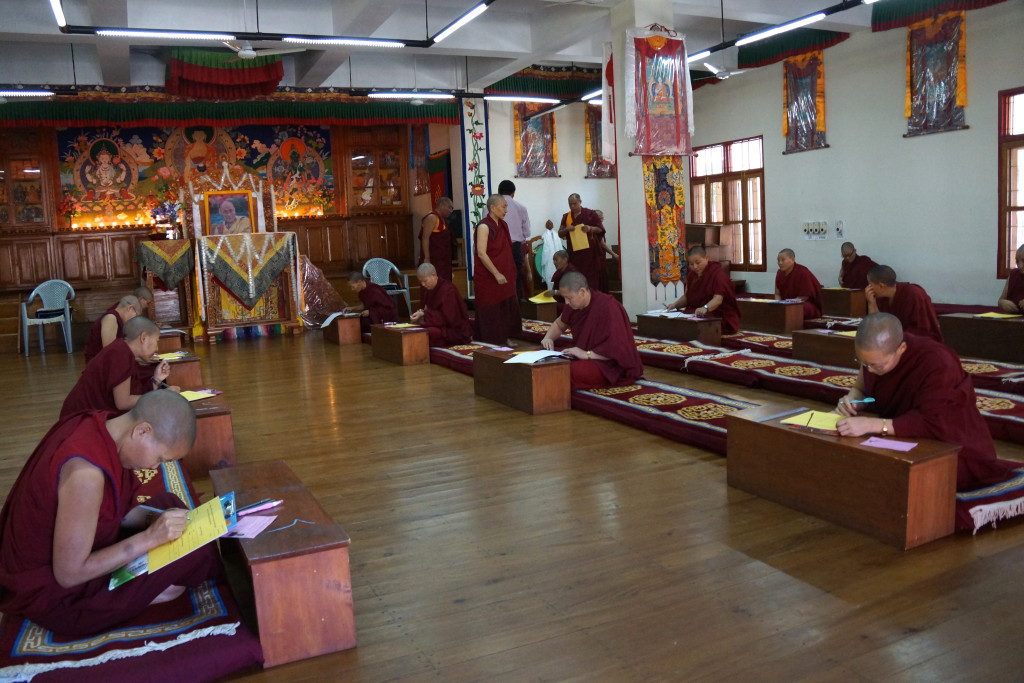 The second round of the Geshema Examinations was held at Dolma Ling Nunnery and Institute from May 1-16, 2014. 23 nuns sat the 2nd year exam, while 6 sat the 1st year exam. The results were released on July 6, His Holiness the Dalai Lama’s Birthday. We are very happy to announce that most of the nuns did very well in their exams; only three nuns failed, one from the 2nd year group and two from 1st year group.
The second round of the Geshema Examinations was held at Dolma Ling Nunnery and Institute from May 1-16, 2014. 23 nuns sat the 2nd year exam, while 6 sat the 1st year exam. The results were released on July 6, His Holiness the Dalai Lama’s Birthday. We are very happy to announce that most of the nuns did very well in their exams; only three nuns failed, one from the 2nd year group and two from 1st year group.